
Over the centuries, artists have been obsessed with human facial expressions and how to portray them. The success or failure of a work of art that includes human beings can often depend on that one aspect of a painting, drawing, or sculpture.
As everyone who has ever tried it knows, accurately portraying any of the countless human emotions by means of facial expression is incredibly, frustratingly difficult. With the slightest slip of the brush or pen or etching tool, a pleasant smile becomes a sarcastic grin. Anger becomes disgust. Tender regard becomes sadness or despair. And starting over is sometimes the only remedy. The Italian Renaissance artist Leon Battista Alberti wrote in his 1450 instructions for artists, On Painting, “Who would ever believe who has not tried it how difficult it is to attempt to paint a laughing face, only to have it elude you so you make it more weeping than happy?”
Today, artists have photography and freeze-frame images to help them re-create subtle, fleeting human expressions in works of art, but even now, the portrayal difficulties are still there. During the centuries before photography, artists had to rely solely on serious study, close observation, and technical skill. One of the artists best known for success in this endeavour was Rembrandt van Rijn.
REMBRANDT AND SELF-PORTRAITURE
From his earliest years as an artist, Rembrandt was interested in self-portraiture, and he was among the first artists to concentrate on facial expression by using his own face to study the subject. In his mid-20s, Rembrandt embarked on a small series of self-portrait etchings that depicted his own face expressing widely different emotions.
この記事は Artists & Illustrators の December 2020 版に掲載されています。
7 日間の Magzter GOLD 無料トライアルを開始して、何千もの厳選されたプレミアム ストーリー、9,000 以上の雑誌や新聞にアクセスしてください。
すでに購読者です ? サインイン
この記事は Artists & Illustrators の December 2020 版に掲載されています。
7 日間の Magzter GOLD 無料トライアルを開始して、何千もの厳選されたプレミアム ストーリー、9,000 以上の雑誌や新聞にアクセスしてください。
すでに購読者です? サインイン

Still life IN 3 HOURS
Former BP Portrait Award runner-up FELICIA FORTE guides you through a simple, structured approach to painting alla prima that tackles dark, average and light colours in turn
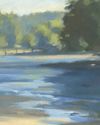
Movement in composition
Through an analysis of three masterworks, landscape painter and noted author MITCHELL ALBALA shows how you can animate landscape composition with movement
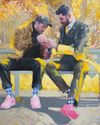
Shane Berkery
The Irish-Japanese artist talks to REBECCA BRADBURY about the innovative concepts and original colour combinations he brings to his figurative oil paintings from his Dublin garden studio

The Working Artist
Something old, something new... Our columnist LAURA BOSWELL has expert advice for balancing fresh ideas with completing half-finished work
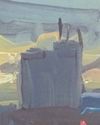
Washes AND GLAZES
Art Academy’s ROB PEPPER introduces an in-depth guide to incorporating various techniques into your next masterpiece. Artwork by STAN MILLER, CHRIS ROBINSON and MICHELE ILLING
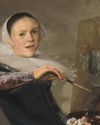
Hands
LAURA SMITH continues her new four-part series, which encourages you to draw elements of old master paintings, and this month’s focus is on capturing hands

Vincent van Gogh
To celebrate The Courtauld’s forthcoming landmark display of the troubled Dutch master’s self-portraits, STEVE PILL looks at the stories behind 10 of the most dramatic works on display
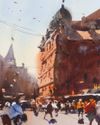
BRING THE drama
Join international watercolour maestro ALVARO CASTAGNET in London’s West End to paint a dramatic street scene
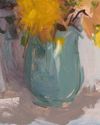
Serena Rowe
The Scottish painter tells STEVE PILL why time is precious, why emotional responses to colour are useful, and how she finds focus every day with the help of her studio wall
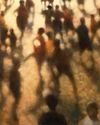
Bill Jacklin
Chatting over Zoom as he recovers from appendicitis, the Royal Academician tells STEVE PILL about classic scrapes in New York and his recent experiments with illustration